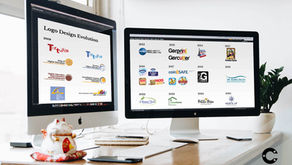Book Cover Design
- Claudia Carranza

- May 20, 2021
- 4 min read
Updated: Aug 28
An effective book cover makes a positive first impression on potential readers. Sometimes you think that nobody should judge a book by its cover, but the truth is, book cover design can make or break a book because it is a crucial part of your marketing effort. Therefore, design matters for two important reasons: it is what gets people to pick up your book in the bookstore or click on the thumbnail when browsing online.

How to design an impressive book cover
A unique book cover design is a way to attract potential readers and buyers of a book. A successfully designed book cover will give the tone of your book, will guide hints without giving it all away, and will excite readers into actually opening up the book and reading. On the other hand, try these suggestions and tips for designing dynamic book covers for both ebooks and print.
Set the tone before you start: The tone of the cover should match the tone of your book.
Make typography the main star: Typography is often overlooked but, by using the right fonts, you can add clarity and depth to your cover.
Use photography for a professional touch: Take on a traditional composition to create a compelling book cover for your story.
Express the colours of your story: Use a colour story that resembles the one you’ve told with words. If your book works with fewer colours, definitely go with less.
Use white space to create focus: White space doesn’t mean that the whole cover must be completely minimal. Always find one component in your story to focus on visually with your book cover.
Interlace your narrative into your cover design: Studies show that you only have eight seconds to persuade the reader to take a chance on your book. Everything begins as soon as the reader picks up the book and looks at the cover.
Design should make sense even as a thumbnail: Test your book cover design in various sizes, including a tiny thumbnail, to see if your cover makes sense when browsers are searching online.
Use custom photography: If you have face recognition in your field, or if you're writing an autobiography, placing your face on the cover gives the reader an extra connection point to you.

1. Type or image on your front cover
Readers are now more likely to find books on sites like Amazon rather than a physical bookstore. So, it’s more important than ever to make a book cover design particularly eye-catching even at thumbnail size. To ensure your cover competes with others, it’s good to prioritize either typography or images on your design with an equal balance of both for creating a nice enough cover.
2. Typographic hierarchy on your cover
Creating a hierarchy or order of text elements on your cover will help a potential reader to see the important information about your book quickly, and help to promote a well-balanced layout. Consider the sort of typeface(s) you want to use on your cover because the style of font you choose can give readers a feel for the book genre as well as improving the visibility and impact of your cover design. Consider also the sizing of your type (the title at the largest size, author second largest, and reviews or quotes third in the hierarchy), the weight, the style, and the colour.
3. A wraparound design
While the front cover should entice the viewer into picking up the book in the first place, the individual is then likely to flip the book over to check out the blurb on the back. With this in mind, it’s important to give almost as much thought to the reverse of your cover design as the front. A wraparound cover design, in which some or all of the graphics on the front cover are continued across the spine and onto the back cover, is a quick, easy, and effective way to give your cover design a professional look. It also helps to continue the narrative of the front cover onto the back.
4. Cover artwork essentials
It’s important to include a few essential extras on your design which will make your cover marketable. If you are creating the cover for a publisher, they may want to include their logo on the spine and the back cover, as well as include a website. The author may also want to include their own website and/or a portrait photo on the back of the cover. Additionally, if you are creating your cover for a print book to sell in bookstores, you will also need to include a barcode on the reverse side of the cover (placed at the bottom left or bottom right of the back cover), and the barcode will include the book’s ISBN number and pricing information.
5. Cover for exporting
If you’re creating a cover for a print book, the setup and export process for your cover artwork will be quite different to exporting a design for a digital eBook (.EPUB). While an eBook cover can be exported as a single .JPEG or .PNG image of the front cover alone, a print cover will require a bit more thought and attention. Learn how to create a book cover step-by-step with this comprehensive Adobe InDesign tutorial.









Comments